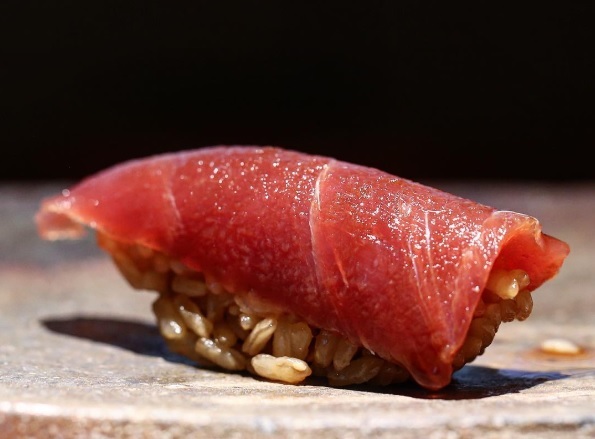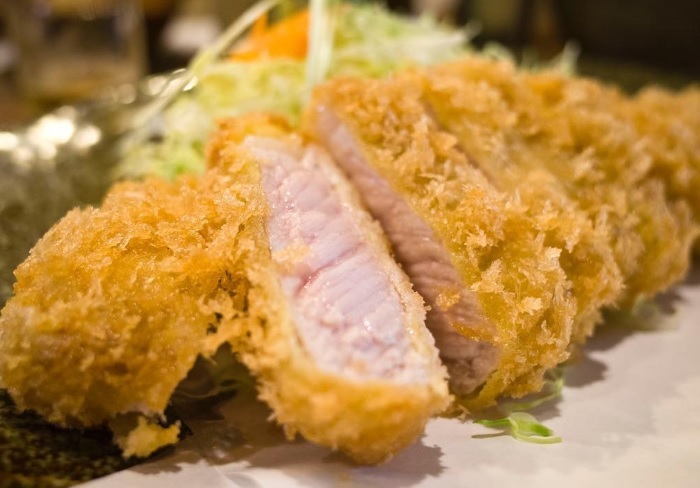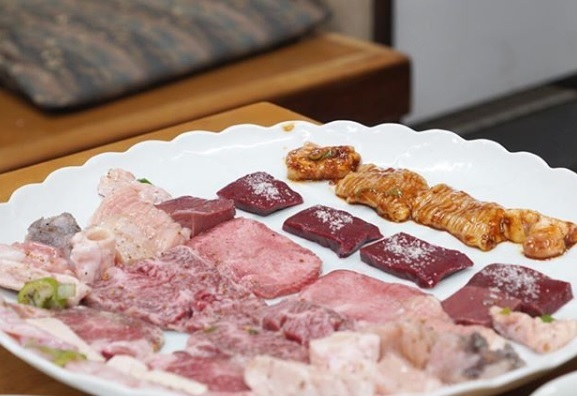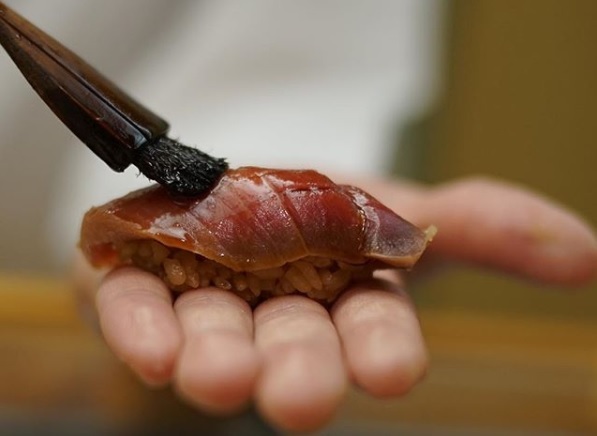All About Sushi Saito, the World's Best Sushi Restaurant
Owner Chef Koji Saito was born in 1972 in Yachiyo City, Chiba Prefecture (a residential area in the suburbs of Tokyo).
When he was in high school, he was taken to a sushi restaurant by the owner of a fish shop where he worked part-time. He was impressed by the cool-looking sushi chefs working there, and after graduating, he went to work at Kyubei, a first-class restaurant in Ginza.
During his six years of hard work, he sometimes ran away from the restaurant, but it was during this time that he met Shinji Kanesaka (currently the owner of Sushi Kanesaka), who would later determine the rest of his life.
Chef Saito has said, 'There were times when I wanted to run away because it was so hard. But thankfully, my senior came to bring me back. I can see now that when I left, my senior would go back to being the lowest rank. That's why he was so desperate.'
Mr. Kanesaka was a year older than Kyubei. Although he was the same age as me, his every movement was lean and clean. Even cleaning and tidying up were done perfectly. Seeing his work, I learned that every job has a meaning.'
In 2000, Saito joined Kanesaka when he started his own business and launched Sushi Kanesaka Ginza. Saito admired Kanesaka as a big brother and started making sushi at the counter alongside him.
Later, Saito was entrusted with Kanesaka's branch and opened Sushi Kanesaka Akasaka. In 2005, he took over the restaurant and started his own restaurant named Sushi Saito.
At one point, he had trouble attracting customers, but his sushi, which was beautiful to look at and evolved from the 'Kanesaka' style, soon gained a reputation for its taste, and he continued to run the restaurant steadily as a 'restaurant where you can't get a reservation.'
'Sushi is a world of fish, sushi rice, wasabi, and soy sauce; that's it. It's easy to understand, but because it's so simple, you can't fake it. Each piece of sushi requires preparation: the drama of the broker and the fisherman. It is our job as sushi chefs to bring all of this together and serve it. That's why you have to have a lot of thoughts and feelings to make good food,' says Saito.
In 2020, the restaurant will be converted to a referral-only restaurant and forgo the three Michelin stars it has had for ten years.
Unfortunately, the general public can no longer access Saito's neat and honest sushi.
Sushi Style
Only salt and red vinegar are used to season the rice.
He chooses vinegar that is not too strong, so the finished product is almost colorless, and you cannot tell that he uses red vinegar.
The rice is slightly salty and slightly warmer than body temperature.
The rice is not very distinctive, making it easy to match with any ingredients.
He focuses on the tuna. Tuna is the flower of a sushi restaurant.
'I'm not particular about where the tuna comes from, but I leave it to my trusted broker, Yamayuki, who knows me and my sushi very well,' says Saito.
He carefully assesses the ingredients he procures, imagines how they will look when combined with rice, and prepares them to taste good as nigiri.
He uses a much smaller variety of ingredients than other sushi restaurants, and they are all very orthodox.
He may use less shellfish or use bonito for a longer period, depending on his preference.
The snacks are simply cooked fish.
He believes that the snacks at a sushi restaurant are different from those at other restaurants.
We are a sushi restaurant, not sushi kappo restaurant, and we don't want to be anything more or less than sushi.
Omakase nigiri at Sushi Saito
Sea bream(Tai)
Start with the white meat first. The white meat is the best way to understand the taste of the rice, so it is the best way to greet the customers.
Sea bream is the king of white meat. If you let it sit for a while, the sweetness will come out and the saltiness of the rice will be enhanced.
Yellowtail(Buri)
The second piece is amberjack, which has a rich flavor. The part to be used is determined by the amount of fat in the fish.
It is lightly marinated in soy sauce to slightly reduce its peculiarity and bring out its flavor.
As the weather gets colder, the sweetness of the flesh increases and the aftertaste lingers longer.
Splendid Alfonsino(Kinmedai)
This is a dish that has recently been introduced.
The skin of the sea bream is boiled in water, and the flesh is tightened with kelp.
It has a different sweetness and flavor from amberjack, and the meat has a crunchy texture.
Gizzard shad(Kohada)
This is a great way to refresh your palate.
Use the same vinegar and salt as for the rice.
Don't use too much vinegar or salt, but make sure it has a crispy taste.
Tuna(Akami-zuke)
This is where we start to clean up for the 'Saito' omakase.
First up is the red meat. This is always served as 'Zuke.'
You can enjoy the unique aroma of the tuna and the chewiness of the red meat.
Medium fatty tuna(Chutoro)
This tuna is known for its moderate fat content, but depending on the time of year, it can taste as good as otoro.
It's interesting to note that the taste can be completely different depending on the season, the individual, the part, and the amount of time it's been left to rest.
Fatty tuba(Otoro)
The elegant sweetness of the fat and the lingering aftertaste is the best part of winter tuna.
The rice is the perfect complement to this strong flavor.
Tuna really comes into its own when it is served as nigiri.
Squid (Sumika )
This is where the second half comes into play.
This is where you have to let go of the lingering taste of the tuna.
Served with salt instead of nigiri soy sauce, sumika has a clear taste.
Kuruma prawn(Kuruma ebi)
This is a dish that I've kept from my training.
By serving it warm and freshly boiled, the original sweetness of the tiger prawn is emphasized.
The addition of prawn miso (ground up interna
Horse mackerel(Aji)
I always use horse mackerel from Izumi, Kagoshima.
The flavor of the horse mackerel is enhanced by adding a condiment of finely chopped asatsuki mushroom and ginger.
Salmon roe(Ikura)
Rather than being pickled in soy sauce, it is pickled in soup stock.
It has a very soft texture and taste, almost like a drink.
Bonito(Katsuo)
This is a material that is used almost all year round.
The skin is seared to add a savory flavor.
Sea urchin(Bafun-uni)
This time, we served a plate of Bafun-uni.
Unlike salmon roe, I rarely make it into a gunkan because the strength of the seaweed spoils the delicate sweetness of the uni.
Conger eel(Anago)
In the case of the omakase (15 pieces), the 14th piece is the conger eel with salt, and the 15th piece is the conger eel with tare (sauce).
The conger eel is softly seared just before serving to make it soft enough to melt in the mouth.
This is the first time the sweetness of sugar is added.
Thick rolled sushi(Futomaki)
Some are tekkamaki, some are futomaki, and some are kanpyo. The ingredients for the rolls vary depending on the day.
Kanpyo (dried gourd) boiled in spicy sauce goes well with the nori (seaweed) and is just the right flavor after the sweet conger eel.
Eggs(Tamago)
The eggs are served soft and melt in your mouth like pudding. It is a true sushi restaurant dessert.
Sushi restaurant run by a chef from Saito.
◆Sushi Takahashi
This restaurant opened in 2014. The owner is Jun Takahashi, an elite sushi chef who graduated from culinary school at the top of his class and then studied at Saito.
The taste of sushi has stabilized as the explosive popularity of the past has subsided.
The restaurant features a variety of highly creative snacks.
You can enjoy the tasty snacks at the level of a kappo restaurant with rare sake and then quickly pick up the sushi.
If you can enjoy this restaurant in this way, then you are a 'Ginza connoisseur.'
◆Daikanyama Sushi Takeuchi
This restaurant opened in 2017. The owner is Jun Takeuchi, who was trained at Kanesaka and Saito.
This is a rare sushi restaurant in the Shibuya area where you can enjoy high-quality Edomae Sushi for lunch. The rice is made in small sizes and has a sour taste with a touch of red vinegar.
The 8,000 yen omakase course is very reasonably priced and is secretly popular among sushi fans.
◆Sushi Ishiyama
This restaurant opened in 2018. The owner is Takao Ishiyama, who is also popular among foreign tourists.
The rice, made mainly with red vinegar, has a gentle flavor that brings out the best in the ingredients.
The restaurant has not exploded in popularity despite its reputation because it does not have an outstanding personality. In a good sense, it is a place where you can enjoy reliable-quality sushi.
◆Sushi Tsubomi
Opened in 2018, this sushi restaurant is produced by Sushi Saito.
Makoto Maruyama, who worked at Sushi Saito in Kuala Lumpur, is currently in charge of the counter.
The lineup of snacks and the quality of the ingredients are almost the same as those at Sushi Saito, and the restaurant is unique in the sense that it allows customers to experience Saito-style sushi, which is otherwise impossible for first-time customers.
It is said that it has become quite difficult to make reservations these days.
◆Ebisu Endo
It opened in 2019. The owner is Keiji Endo, who was trained at Sushi Mizutani and Saito.
Less than six months after opening, the restaurant got so popular that it was booked out months in advance.
The owner frequently visits fishing ports to deepen his knowledge of ingredients and actively explores new frontiers of Edomae Sushi, such as using natural eel as nigiri.
The rice nigiri made with rice vinegar and slightly salted rice is very good, and we can expect more of the same in the future.
◆3110NZ by LDH Kitchen
Opened in July 2020, this is Japan's first gallery-attached sushi restaurant in collaboration with the contemporary art gallery Nanzuka.
Sushi is made by 32-year-old Ikuya Kobayashi, who started Hong Kong Sushi Saito as a disciple of Takashi Saito and was awarded two Michelin stars in his first year.
The ingredients' quality is almost the same as at Sushi Saito, but the snacks are original to this restaurant.
All the staff, including Kobayashi, are fluent in English, so even foreigners can feel at ease here.
◆Sushi Shunji
Shunji Hashiba, an up-and-coming sushi chef who had been Saito's right-hand man for a long time, opened this new restaurant in 2020 after becoming independent.
His neat nigiri, which is the same as his master's, is already top-notch, but like Sushi Saito, most of the seats are reserved by regular customers, and there is very little chance for first-time customers to visit.
Register account first.
Register










Comments 3
3
Shi
Thank you very much for the article Saitoさん - always enjoy reading your insights!
guest
Saito-san, thanks for this wonderful article!
Leo Saito
chief editor, TokyoTableTripArticle about Sushi Saito, which has been called the best in the world.